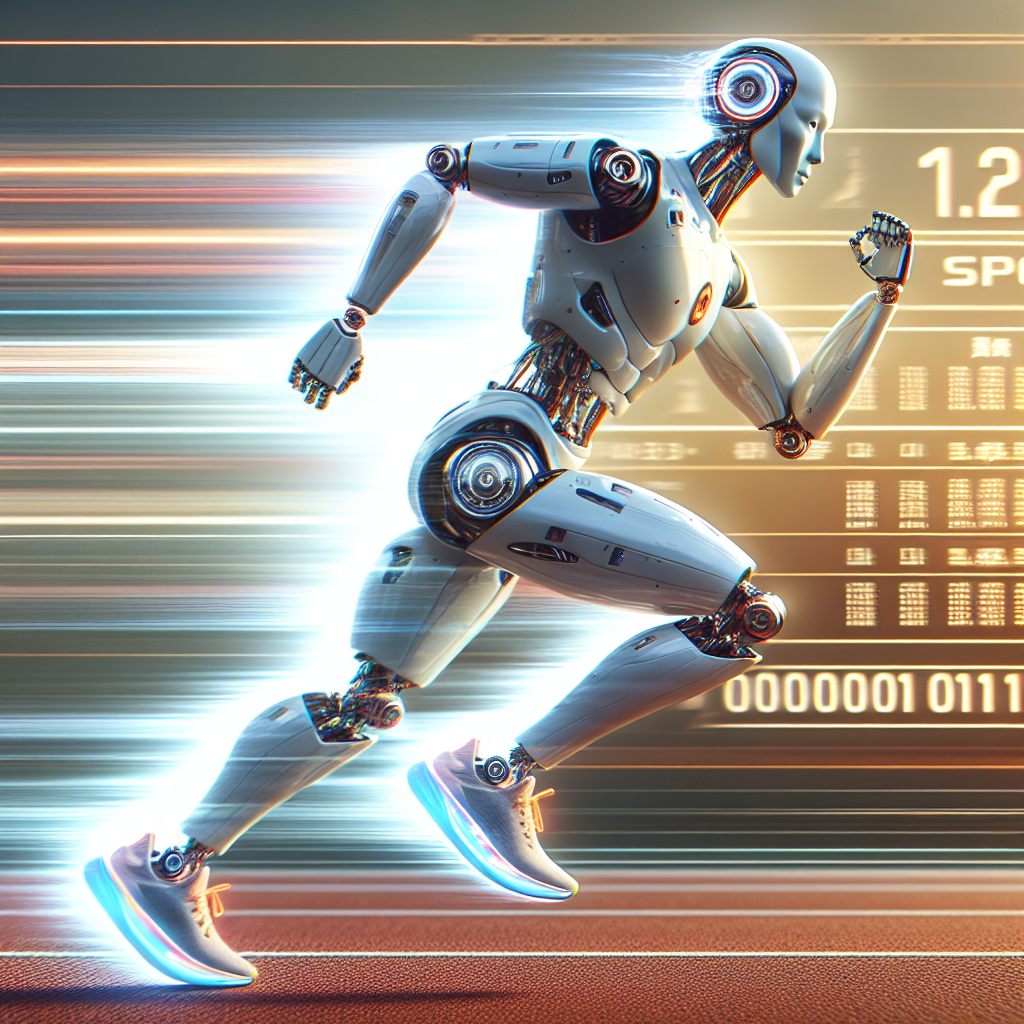In the rapidly evolving field of robotics, a noteworthy achievement has caught the attention of tech enthusiasts and engineers alike. Recently, a Chinese humanoid robot set a remarkable speed record on a track, a feat made possible by a unique innovation: specialized sneakers designed specifically for the robot. This breakthrough not only highlights the progressive strides in humanoid robotics but also signals a new era of advancements in artificial intelligence and engineering design.
The Emergence of Humanoid Robots
Humanoid robots, robots engineered to mimic the human body structure, have been a focal point of robotics research. These robots are designed to perform tasks typically carried out by humans, with applications ranging from manufacturing and healthcare to customer service and entertainment. The introduction of a humanoid robot capable of setting speed records represents a significant leap forward in its functionality and usability.
Why Speed Matters in Robotics
Speed is a critical metric in the development of humanoid robots for several reasons:
- Efficiency: Faster robots can perform tasks more quickly, improving productivity in industrial and commercial applications.
- Real-time Processing: Speedy robots process and react to environmental changes swiftly, enhancing their adaptability and problem-solving capabilities.
- Competitive Edge: Setting speed records positions the creators as leaders in the robotics industry, attracting potential investors and collaborators.
The Innovative Sneakers Behind the Record
The recent breakthrough was made possible due to the development of new “sneakers” specifically designed for the humanoid robot. But what made these sneakers so special?
Engineering the Perfect Sneaker for Robots
These sneakers are engineered with advanced materials and design techniques to complement the mechanics of the humanoid robot. The key characteristics include:
- Lightweight Material: Crafted from ultra-light composites that reduce the overall weight, allowing for greater speed without compromising stability.
- Enhanced Grip: The sole design includes a unique tread pattern for maximum grip, ensuring the robot does not slip while maintaining high speeds.
- Shock Absorption: Built-in shock absorbers protect the robot’s structural integrity during high-speed locomotion, reducing wear and tear.
Bridging Design and Functionality
The sneakers showcase a perfect synergy between form and function in robotics. They are not just an accessory but an integral component that enhances the robot’s performance, striking a balance between aesthetics, engineering, and utility.
Implications of the Record-Breaking Speed
The implications of achieving such a milestone extend beyond the immediate excitement of setting a record. This achievement:
- Advances AI Integration: It showcases enhanced artificial intelligence capabilities, as the robot must process immense real-time data to achieve and maintain high speeds.
- Boosts Industry Innovation: Demonstrates the importance of continuous innovation in design and materials, inspiring further research and development in the industry.
- Expands Practical Applications: Sets a precedent for future applications, including emergency services where speed and efficiency are crucial.
The Role of AI in Achieving Speed
Artificial intelligence plays a pivotal role in optimizing the robot’s movements and maintaining balance at high speeds. Sophisticated algorithms enable real-time data analysis, allowing the robot to adjust its gait dynamically and ensuring seamless speed and agility.
The Future of Humanoid Robotics
This achievement opens the door to a host of possibilities and advancements. Here’s what we can anticipate:
Deployment in Varied Sectors
As developments continue, humanoid robots could revolutionize various sectors. Some potential applications include:
- Healthcare: Assisting in patient care, performing surgeries with precision, and managing hospital logistics.
- Search and Rescue: Speedy robots could access disaster-stricken areas rapidly, saving lives in critical situations.
- Logistics and Delivery: Enhancing efficiency in warehouses and transforming last-mile delivery services.
Ongoing Challenges
While the speed record is a cause for celebration, challenges in humanoid robotics remain:
- Energy Consumption: Increasing speed often results in higher energy demands, necessitating improvements in battery technology and energy efficiency.
- Complex Interactions: Ensuring that robots can navigate complex environments and interact with humans safely and effectively is crucial.
Ethical Considerations
The widespread deployment of humanoid robots raises important ethical questions. It’s vital to consider:
- Job Displacement: As robots assume roles traditionally held by humans, strategies must be developed to address job displacement and retraining opportunities.
- Privacy and Security: Ensuring that robots adhere to strict security protocols to protect user data and privacy.
A New Era for Robotics
The achievement of a speed record by a Chinese humanoid robot, thanks to innovative sneakers, is a testament to the incredible progress being made in robotics. It underscores the potential for these machines to become an integral part of everyday life, bridging the gap between science fiction and reality. As technology progresses, the possibilities are limited only by our imagination, promising a future where humanoid robots are companions, colleagues, and lifesavers.

